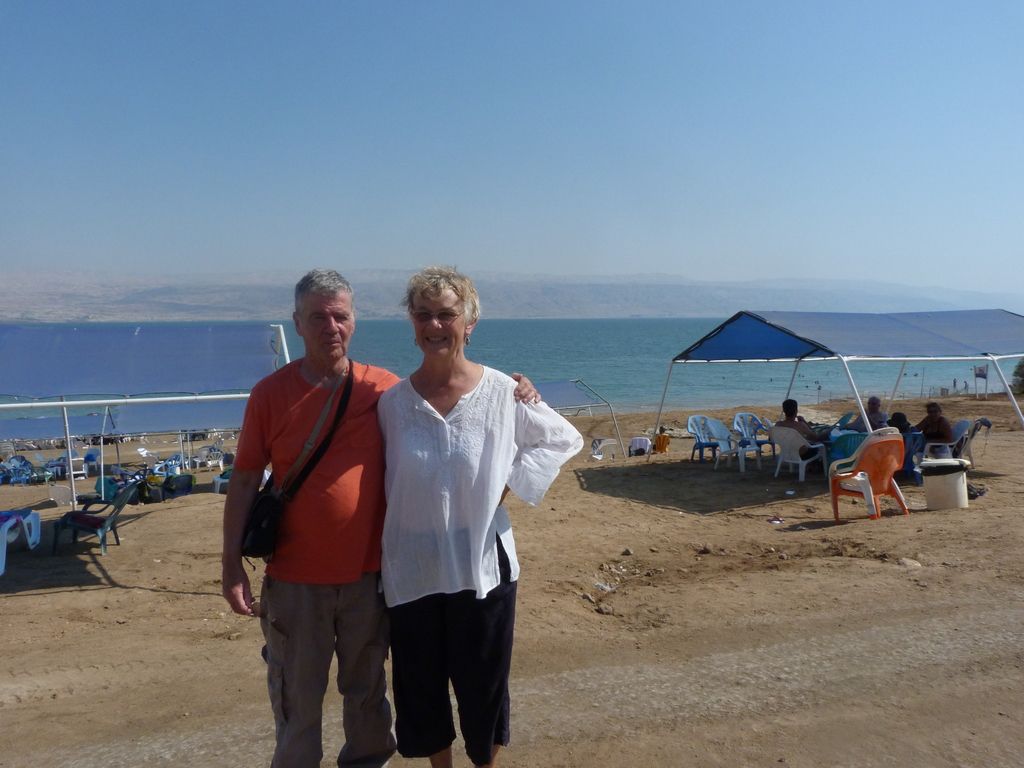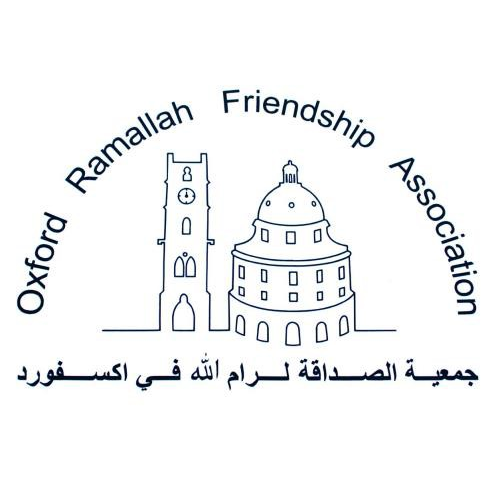ORFA Visit to Palestine - October 2016
An ORFA member writes: There were nine on this trip, five old hands and four first-timers. We were mainly based in Ramallah but we started our first day, a Friday, in Jerusalem.
We met the Vice-Consul, Laurie Hunter at 10am. We outlined the purpose of our twinning trip, and emphasised that groups such as ours needed a specifically designated officer to deal with any problems we encountered. She indicated that she was willing to play that role. The discussion was friendly, but she stressed that there were no funds available for small projects, and that visa problems were dealt with in Amman.
We then did our usual tour around the Old City, Via Dolorosa etc. It was noticeable that there were more Israeli flags flying on Jewish properties in the Muslim Quarter. Earlier we looked at the properties in Sheikh Jarrah, which Palestinians were being cleansed from, and again it is noticeable how the area is slowly being Judaized.
We then went to Ramallah, by bus. This was our base for the remainder of the trip.
On the Saturday we went to Al-Amari Camp, and joined a coach of the staff at the Womens Centre, together with women who had come to Oxford, for a day out, paid by ORFA and the Oxford visitors.
We first went to a religious site in the desert, which the Israelis will not allow the Palestinians to develop. Then we went to the River Jordan, a Christian baptismal site, completely controlled by the Israelis, including a checkpoint.

After this we went to the Dead Sea, a beach near Jericho, again which is controlled by Israeli business, and has a checkpoint. Some of the women swam, but none of us bought anything.
At the end of the day we went to Jericho, and took a cable car up to the restaurant near the monastery in the cliffs.
There we had a meal, with the most wonderful view, and wound this up with a coffee in a house of a friend of one of the women, on a hill overlooking Jericho.
On the Sunday we went into Ramallah, and around the Sakhakini Cultural Centre, which was one of the sites of the Qualandia International Art Festival (http://www.qalandiyainternational.org/about). Over the next few days we would visit several of the sites of this major art event, centering on return, the sea, and the land and cultivation.
We finished our day by having a meal in the house of one of the women from the centre. This was a wonderful Palestinian meal, as were others we were to have.
We started the Monday with a talk in the FIDA offices re the political situation.
This was followed by a talk in the afternoon, at the Palestinian Medical Relief Society offices, by Mustafa Barghouti, which was of great help, particularly for those of our group who have never been before. The growth of settlements, the destruction of trees and houses, has worsened every time we go. We then returned to the centre for the “Sites of Return” section of the festival.

Early Tuesday morning we set off for Bethlehem, where our first port of call was the Palestine Museum of Natural History (https://www.palestinenature.org/). There the Director, Mazin Qumsiyeh, gave us a talk about trying to preserve the fauna and flora of Palestine, and its history. This was a wonderful talk, which could not be separated from the politics of occupation. His gardens include the use of fish in tanks that provide the nutrients for plants - aquaponics - and much other interesting work.
We found throughout this trip innovative work on sustainable agriculture, in this museum, in art exhibits, in the women’s centre in Bethlehem etc.
We were hosted to a lovely meal at the Arab Women's Union guest house in Beit Sahour, then visited sights in Bethlehem, and returned to Ramallah.
The next day we were given a tour around the new Palestinian Museum at Birzeit (http://www.palmuseum.org) by its Director Mahmoud Hawari. This is completely new, and has no exhibition at present, but Mahmoud outlined its plans including touring exhibitions on embroidery, on Gaza History etc. This promises to be a major weapon in the Palestinian struggle. As Mahmoud says, the building (shortlisted for an international award) shows “we are here to stay”.
This visit was followed by a trip to the Democracy & Workers Rights Centre, which campaigns on workers’ rights. In the evening some of our group went to the Fida Youth International Camp, for a show on Palestinian culture.
On Thursday we went for a talk at Addameer (http://www.addameer.org), the prisoners’ rights organisation which campaigns for prisoners in Israeli jails, and in Palestinian jails. The authorities are hostile, because of the work they do highlighting the injustices; 98% are found guilty by Israeli military courts, including children, and PA courts are clearly political. Their workers regularly get imprisoned, and recently one was beaten up. We all felt they do great, necessary work.

In the evening we went to the Child Centre in Al Amari camp, where we were given a lovely singing and Dabke dance display, and some more food.
Friday was a trip to see the new city, Rawabi, which was quite surreal, and then to a picnic in the olive terraces of Arura village. After this we had a talk with a couple of women of the village regards linking with Faringdon in Oxfordshire.
On the Saturday we were given a tour around the camp, including the self -financing disabled centre. There is no longer any UN funding for such activities, in fact UNWRA funding is declining all round. Another meal and exchange of gifts at the Women's Centre followed.
The main group left for the airport on Sunday, and had no trouble exiting.
The rest of us did separate things, before we left, including visiting Nablus, Bethlehem and Taybeh (brewery and ancient village).
Two of us had a meeting with the Executive of the Independent Federation of Trade Unions, where we learnt that they had achieved a new Social Security Law, and its financial backing by the Government. The Trade Union struggles continue.
